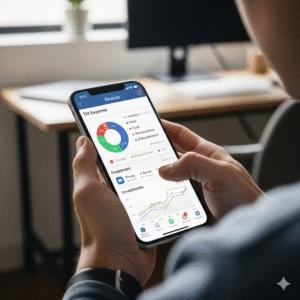
In the fast-paced worlds of real estate and business, timing is everything. Opportunities can appear and disappear in the blink of an eye, and waiting for traditional financing to come through can often mean the difference between sealing a deal and watching it slip away. This is where a specialized financial tool known as a bridge loan comes into play. As its name suggests, a bridge loan is designed to create a financial “bridge,” providing rapid, short-term funding to span a gap until a more permanent financing solution is secured.
Also known as “swing loans” or “gap financing,” these loans are powerful but come with their own unique set of rules, risks, and costs. Understanding what they are, how they work, and when they are the right choice is crucial for any homeowner, real estate investor, or business owner. This comprehensive guide will walk you through everything you need to know about bridge loans, helping you determine if this flexible financing option is the right move for your situation.
How Does a Bridge Loan Actually Work?

At its core, a bridge loan is a temporary loan designed to be repaid quickly, typically within a term ranging from a few months to a year. Unlike a traditional mortgage or business loan that is paid back over many years, a bridge loan is a stopgap measure. The fundamental idea is to provide immediate cash flow to cover a financial shortfall until a future event occurs that will allow for repayment.
This “future event” is the key to a bridge loan and is often referred to as the “exit strategy.” Common exit strategies include:
- The sale of an existing property: This is the most common scenario for homeowners.
- Securing a long-term loan or mortgage: A business might use a bridge loan to acquire a property quickly, then refinance with a conventional commercial loan.
- A round of equity financing: A startup might use a bridge loan to cover payroll and operational costs while waiting for venture capital funding to close.
Because they are short-term and often funded much faster than traditional loans, bridge loans are secured by collateral. This means you must pledge a valuable asset, most commonly real estate, which the lender can seize if you fail to repay the loan. This collateral requirement reduces the lender’s risk, but it’s a critical factor for the borrower to consider.
When to Use a Bridge Loan in Real Estate

Bridge loans are most frequently used in the real estate market, particularly in competitive or time-sensitive situations. They offer a solution to the classic chicken-and-egg problem of needing to buy a new home before you’ve sold your current one.
Winning the Bid in a Competitive Seller’s Market
Imagine you’ve found your dream home, but it’s in a hot market with multiple offers. Many sellers are hesitant to accept an offer with a home sale contingency—a clause that states your purchase is dependent on the sale of your current home. This contingency introduces uncertainty and delay for the seller.
A bridge loan can be a game-changer in this scenario. By providing the funds for a down payment on the new property, it allows you to make a more attractive, non-contingent offer. This shows the seller you are a serious, financially prepared buyer, significantly increasing the chances of your offer being accepted over others.
Buying and Selling Without the Stress
A bridge loan can remove the immense pressure of perfectly timing the sale of your old home with the purchase of your new one. It provides the flexibility to:
- Move on your own timeline: You can purchase and move into your new home without having to rush the sale of your current one.
- Make necessary repairs or upgrades: A bridge loan can provide the capital to renovate your old home to maximize its sale price, or to make improvements to your new home before you move in.
- Avoid temporary housing: Without a bridge loan, you might have to sell your home and move into a rental property while you search for a new one, a costly and disruptive process.
Real-world Example: Sarah and Tom found the perfect home for their growing family, but they hadn’t yet listed their current condo. The market was moving fast, and they knew an offer with a home sale contingency wouldn’t be competitive. They secured a bridge loan using the equity in their condo as collateral. This allowed them to make a strong, non-contingent offer that was accepted. They moved into their new house and then had six months to sell their condo without pressure, eventually using the proceeds from the sale to pay off the bridge loan.
When Businesses Should Consider a Bridge Loan
Bridge loans are also a vital tool in the commercial world, enabling businesses to seize time-sensitive opportunities when traditional financing would be too slow.
Acquiring Commercial Real Estate Quickly
Just like in the residential market, opportunities in commercial real estate can be fleeting. A property might come up for auction, or a seller might need a quick close. A commercial bridge loan allows a business to secure the property first and then take the time to arrange for a long-term commercial mortgage.
Funding Business Acquisitions and Mergers
When one company is acquiring another, there can be a temporary gap between the deal’s announcement and the finalization of long-term financing or investor funding. A bridge loan can provide the necessary capital to close the transaction smoothly without delay.
Covering Short-Term Operational Costs
For businesses, especially startups, cash flow can be uneven. A bridge loan can be used to cover essential expenses like payroll, rent, or a large inventory purchase while waiting for a predictable inflow of cash, such as a large client payment or a round of venture capital funding.
Real-world Example: A manufacturing company needed to purchase a new piece of essential machinery to fulfill a large order. Their application for a traditional equipment loan was expected to take 60-90 days, but they needed the machine within three weeks. They took out a bridge loan secured by their factory property, which was funded in ten days. This allowed them to buy the machinery, complete the order, and then they used the revenue from that order and their subsequent long-term loan to pay off the bridge financing.
The Pros and Cons of Bridge Loans: A Balanced View

Bridge loans offer significant advantages but are not without their drawbacks. It’s essential to weigh both sides carefully before proceeding.
Advantages of Using a Bridge Loan
- Speed: This is the primary benefit. Bridge loans can often be approved and funded in a matter of days or weeks, compared to the months it can take for a traditional mortgage.
- Flexibility: The funds can be used for a variety of purposes, from a down payment on a home to covering business operating costs.
- Increased Purchasing Power: In real estate, it empowers buyers to make more competitive offers by removing the need for a sale contingency.
- Convenience: Repayment terms can sometimes be flexible, with options for interest-only payments or deferring all payments until the loan matures (when the asset is sold).
Disadvantages and Risks to Consider
- Higher Interest Rates: The convenience and speed of a bridge loan come at a cost. Interest rates are significantly higher than those for conventional long-term loans. Rates are often quoted monthly (e.g., 0.5% to 2% per month), which translates to a much higher annual percentage rate (APR).
- Numerous Fees: In addition to high interest, bridge loans typically come with a host of fees, which can include arrangement fees (often a percentage of the loan amount), administration fees, valuation fees, and legal fees. These can add up quickly.
- The Risk of Carrying Multiple Mortgages: For homeowners, a bridge loan means you are responsible for payments on your old mortgage, your new mortgage, and the bridge loan itself, all at the same time. This can create significant financial strain.
- The Collateral is at Risk: Because the loan is secured, if your exit strategy fails—for example, if your home doesn’t sell within the loan term—the lender can foreclose on your property.
Qualifying for a Bridge Loan: What Lenders Look For
While not as income-dependent as traditional loans, lenders still have stringent criteria for bridge loan approval, primarily focused on the collateral and your ability to repay.
- Significant Equity in Your Current Property: This is the most crucial factor. Your existing property is the collateral, and lenders want to see that you have substantial equity built up. The loan-to-value (LTV) ratio is key; lenders typically prefer a lower LTV to minimize their risk.
- A Strong Credit Score: While some lenders are more flexible, a good credit history demonstrates that you are a reliable borrower. Major issues like a recent bankruptcy or foreclosure can be disqualifying.
- A Clear and Viable Exit Strategy: You must present the lender with a well-defined and realistic plan for how you will repay the loan. This could be a signed sales agreement for your current home or a commitment letter for long-term financing.
- Sufficient Liquidity: Lenders may want to see bank statements showing you have enough cash on hand to cover interest payments and other associated costs during the loan term.
- Detailed Documentation: Be prepared to provide proof of income, bank statements, property appraisals, and other relevant financial documents to streamline the application process.
Exploring Alternatives to Bridge Loans

A bridge loan is a specialized tool for specific situations. Before committing, it’s wise to explore other potential options that might be more suitable or cost-effective.
- Home Equity Line of Credit (HELOC): If you have significant equity in your home, a HELOC allows you to borrow against it as needed. Interest rates are typically lower than bridge loans, but the approval process can be longer.
- Home Equity Loan (Second Mortgage): This provides a lump-sum payment based on your home’s equity. It offers predictable monthly payments and lower interest rates than a bridge loan.
- Personal Loans: For smaller financing gaps, an unsecured personal loan might be an option, though the loan amounts are generally much lower than what a bridge loan can offer.
- Remortgaging (Cash-Out Refinance): This involves refinancing your current mortgage for a larger amount and taking the difference in cash. This is a longer process but can provide funds at a much lower interest rate.
- Seller Financing or Lease-Back Options: In some cases, you may be able to negotiate directly with the seller to finance part of the purchase or to lease the home from them for a short period before the sale is finalized.
Is a Bridge Loan Right for You?
A bridge loan can be an incredibly effective financial tool when used correctly and in the right circumstances. It offers unmatched speed and flexibility, empowering you to seize time-sensitive opportunities in both real estate and business. However, its high costs and inherent risks mean it should be approached with caution and a clear understanding of all that’s involved.
The decision to take on a bridge loan should be made only after a thorough evaluation of your financial situation, a realistic assessment of your exit strategy’s viability, and a careful comparison with all available alternatives. By weighing the pros and cons and seeking guidance from a trusted financial professional, you can determine if this powerful temporary financing solution is the right bridge to your next big opportunity.





